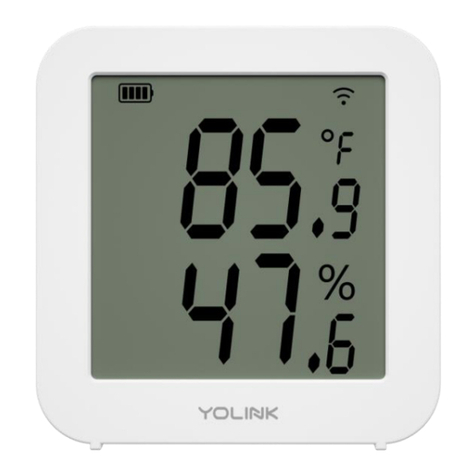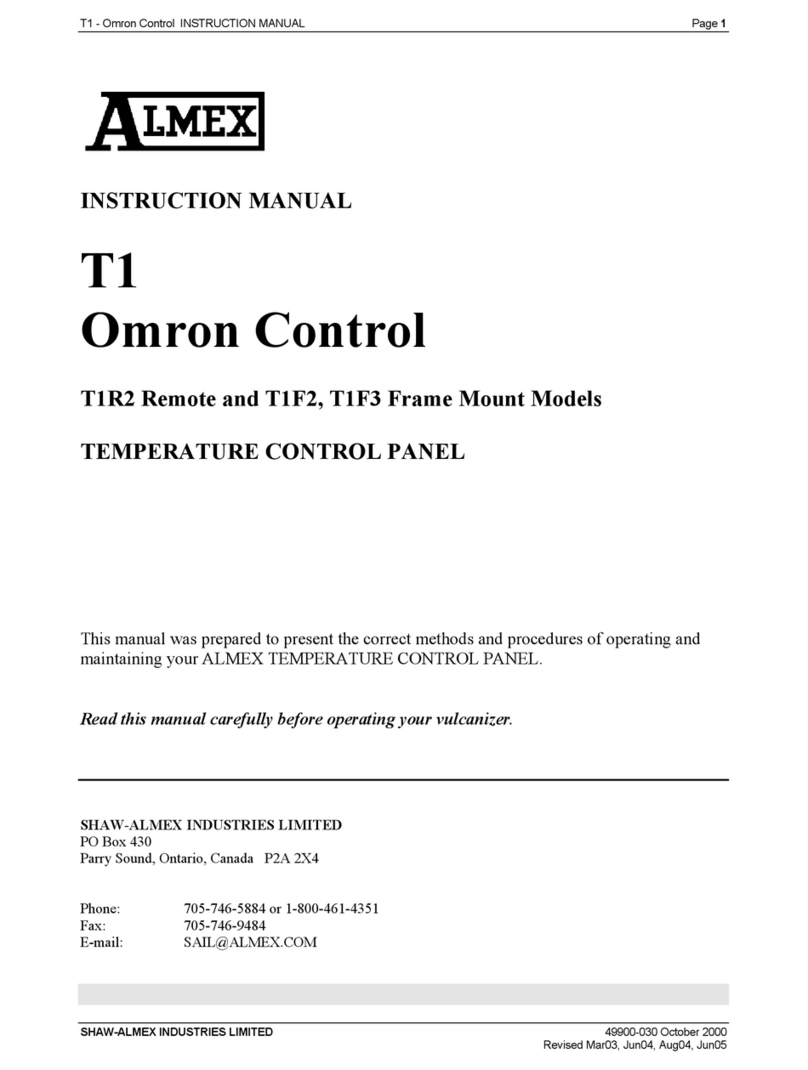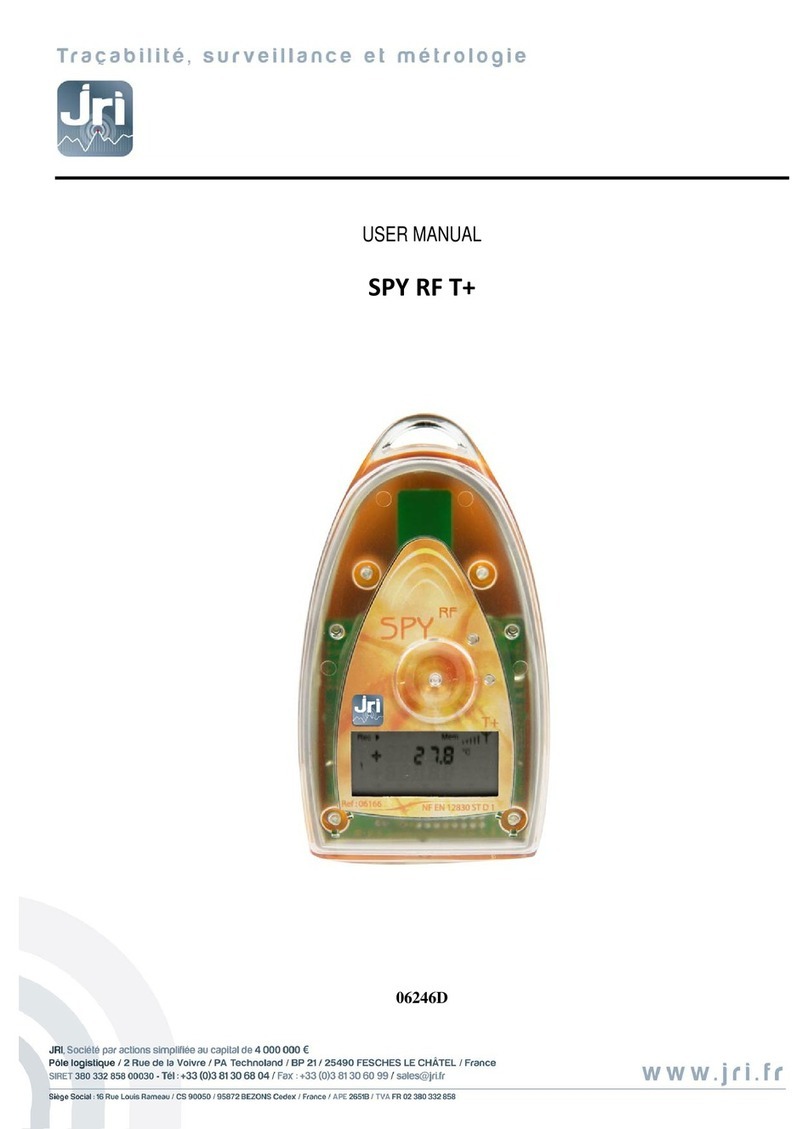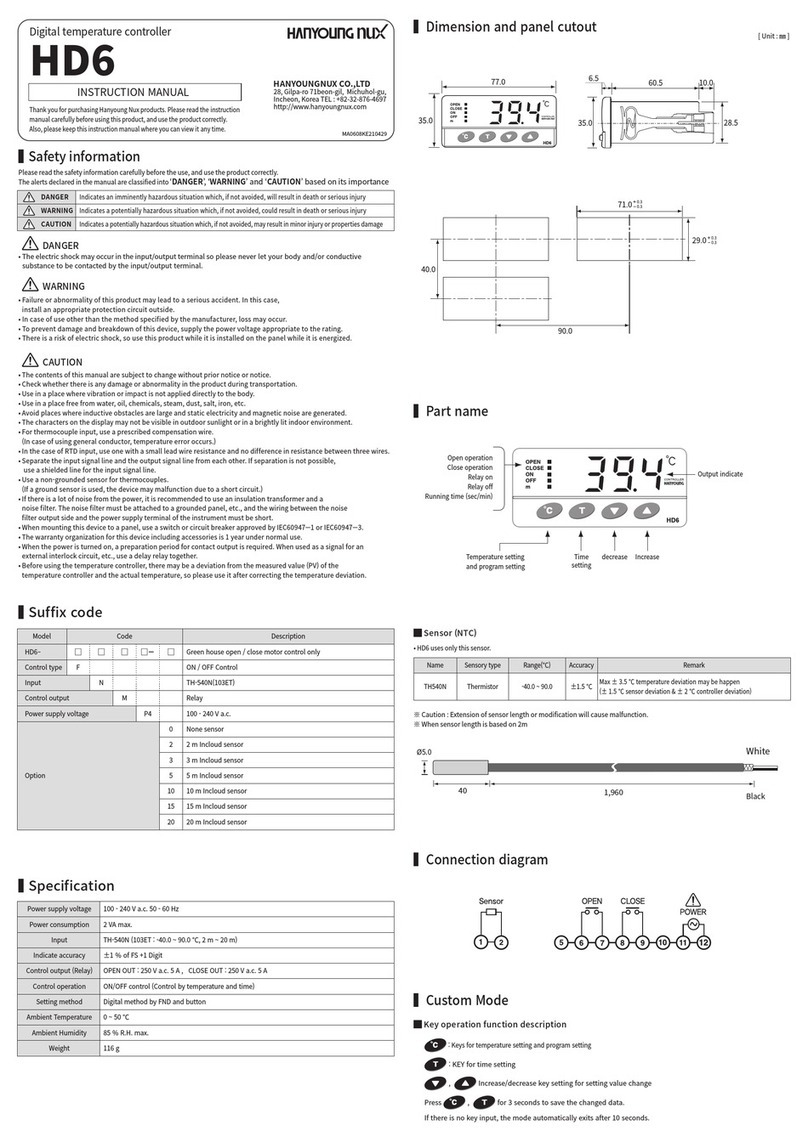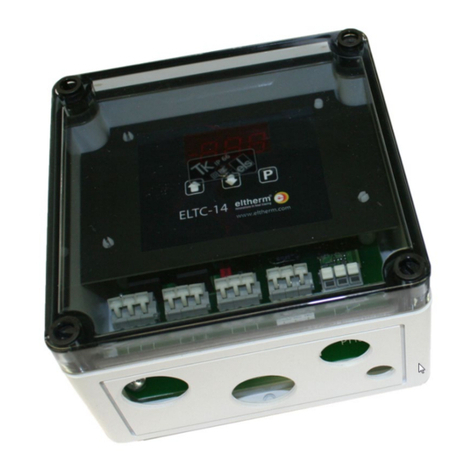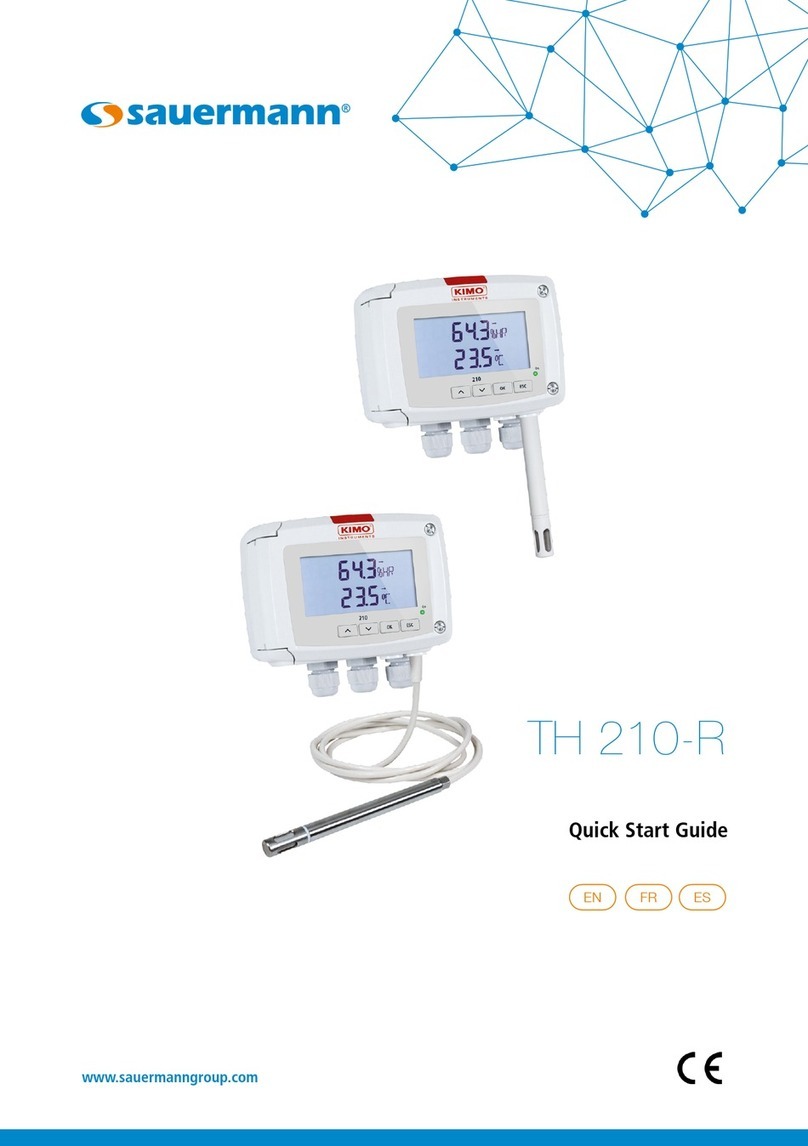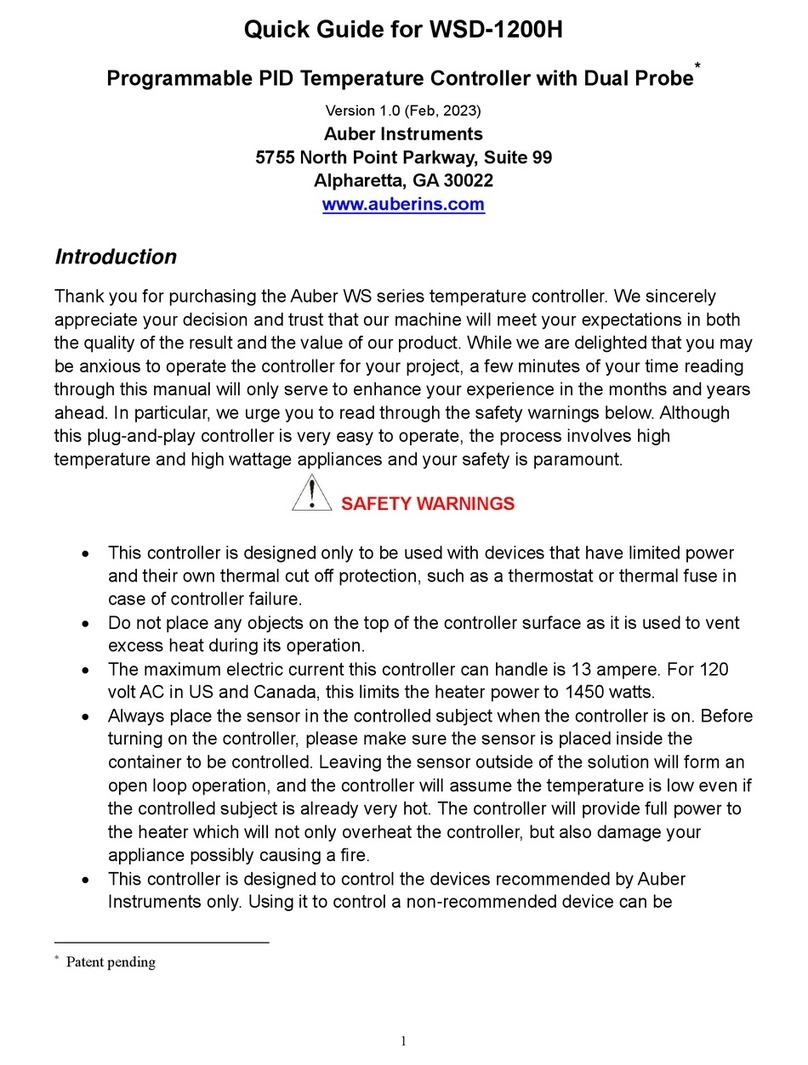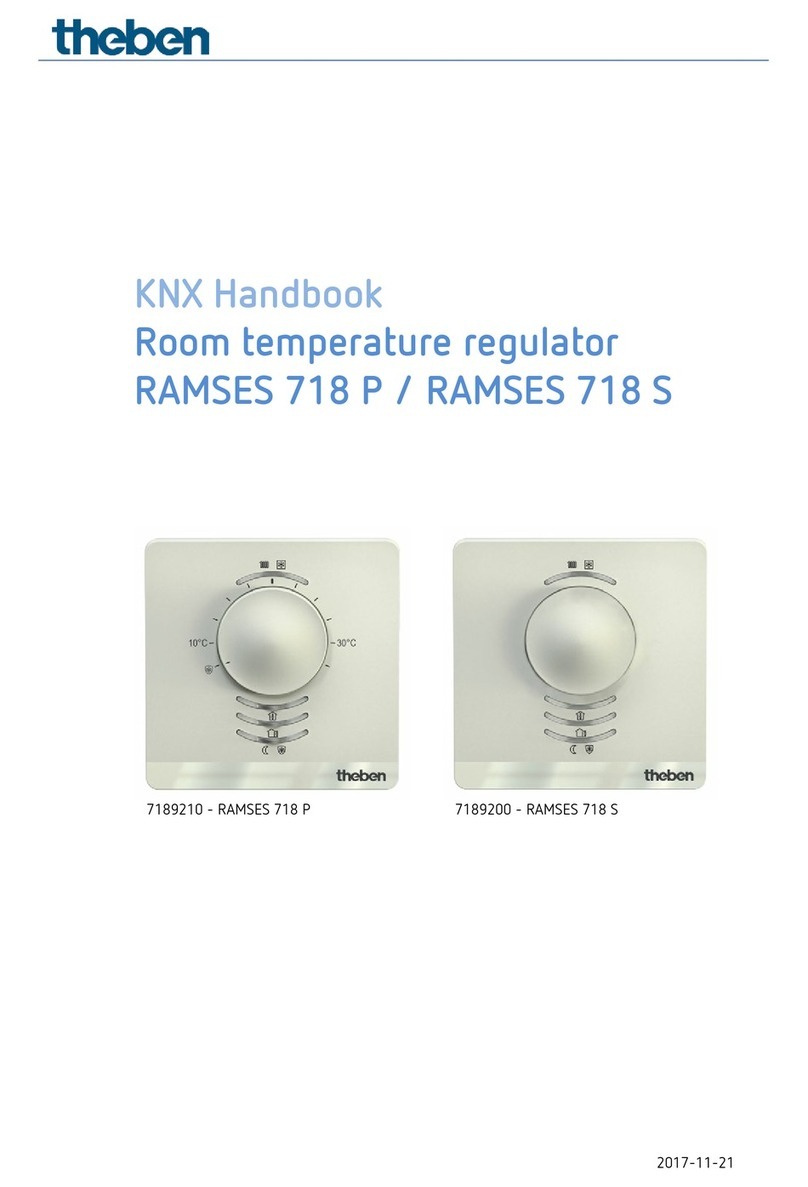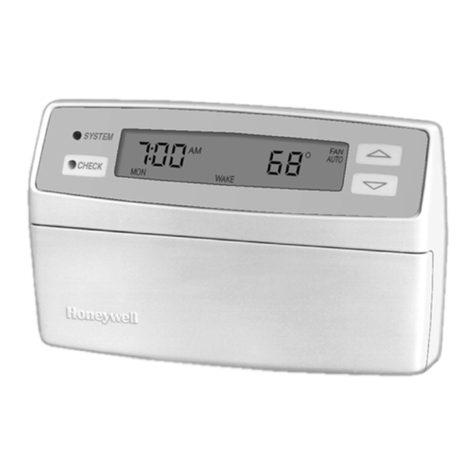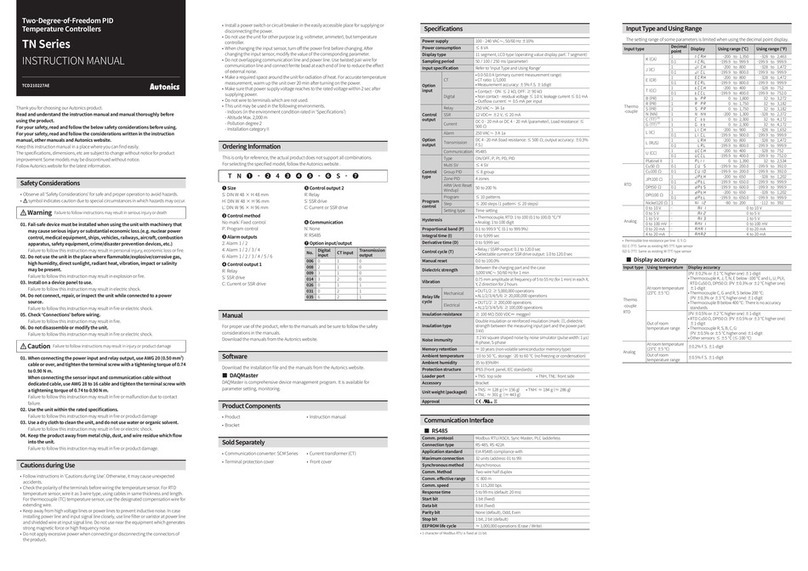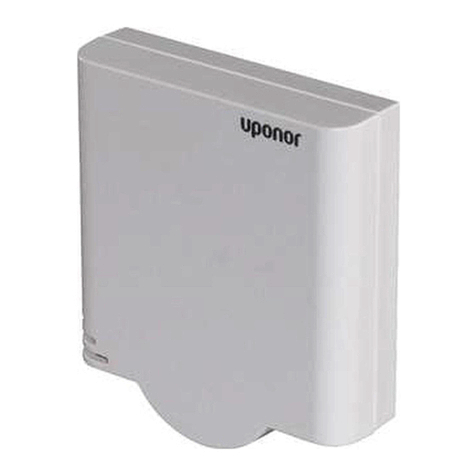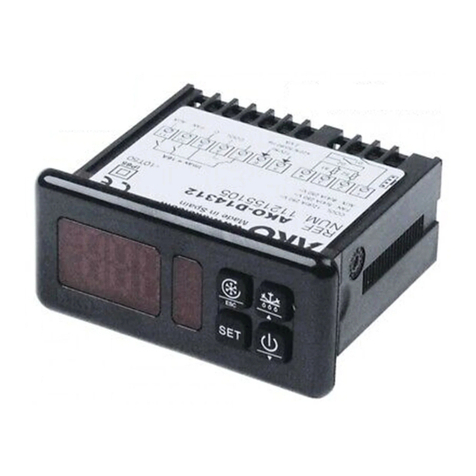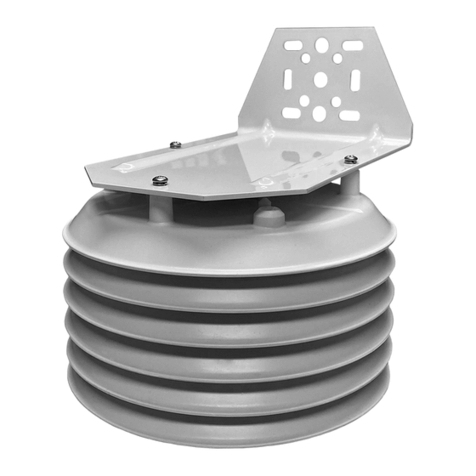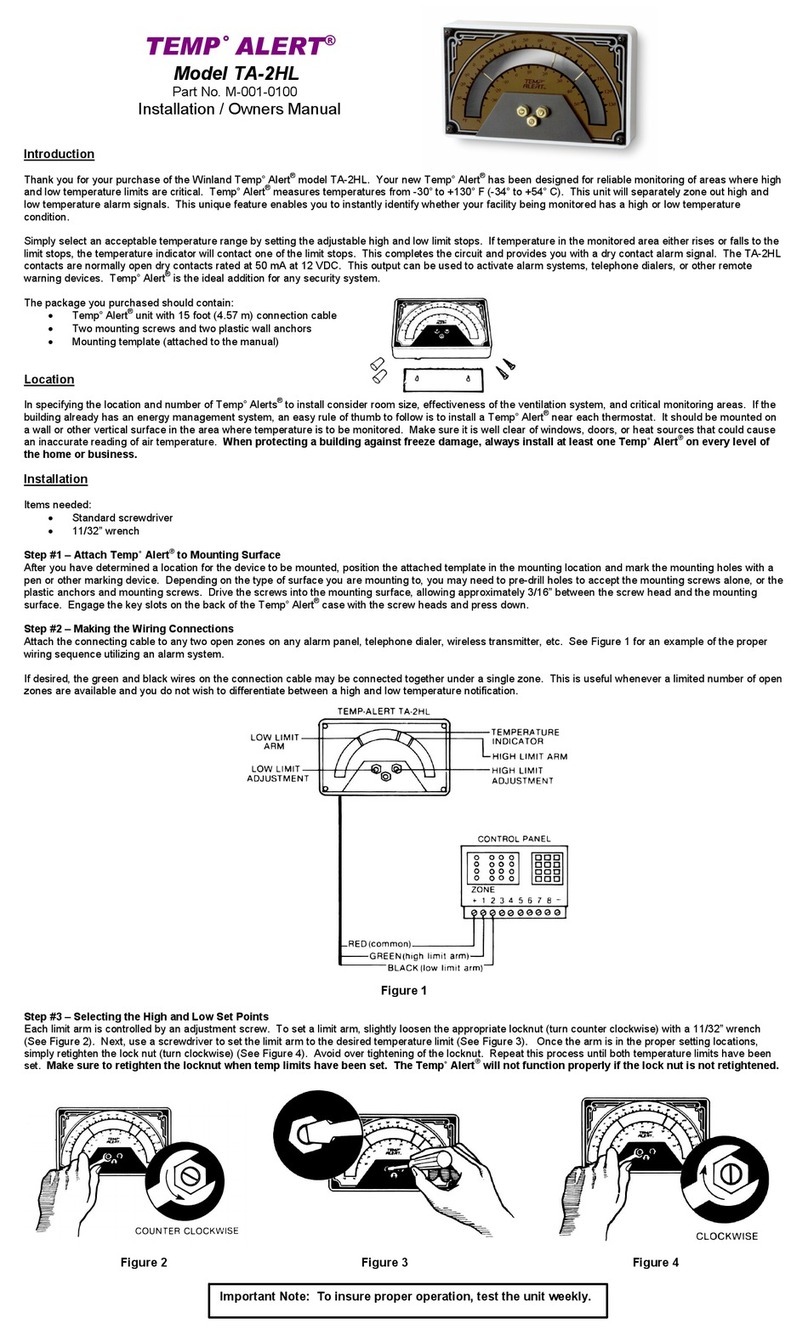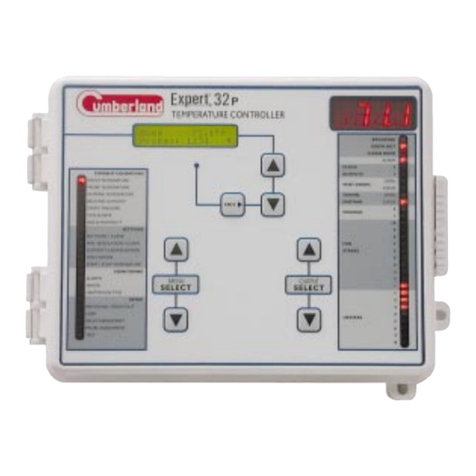RF Code R151 User manual

discover. track. monitor. Installation Guide
R151 Tethered
Temperature Sensor

PN01805 REV00 R151 Tethered Temperature Sensor Installation Guide 2
Contents
Preface 3
Trademarks 3
Copyright Statement 3
FCC Compliance 4
CE Compliance 4
WEEE Compliance 4
Battery Statement 4
R151 Tethered Temperature Sensor 5
Introduction 5
Features 5
Contents 5
Hardware 6
RF Transmitter Operational Specications 6
Power Specications 6
Installation Steps 7
Temperature Sensor Tether Cable Connection Steps 7
Recommended Best Practices 9
Battery Replacement Instructions 10
Warranty & Service 14
Limited Standard Warranty Terms 14
Standard Warranty Limitations 14
Obtaining Service & Support 14
RF Code Customer Support 14

PN01805 REV00 R151 Tethered Temperature Sensor Installation Guide 3
Preface
Trademarks
RF CodeTM and the RF Code logo are trademarks of RF Code, Inc. All other product names are copyright and registered
trademarks or trade names of their respective owners.
Copyright Statement
Copyright © 2011 RF Code, Inc. All Rights Reserved.
This document, as well as the hardware and rmware described therein, are furnished under license and may only be
used or copied in accordance with the terms of such license. The information in these pages are furnished for informa-
tional use only, are subject to change without notice, and should not be construed as a commitment by RF Code, Inc. RF
Code assumes no responsibility or liability for any errors or inaccuracies that may appear in these pages.
RF Code reserves the right to make changes without further notice to any products herein. RF Code makes no war-
ranty, representation or guarantee regarding the suitability of its products for any particular purpose, nor does RF Code
assume any liability arising out of the application or use of any product, and specically disclaims any and all liability,
including without limitation consequential or incidental damages.
The user of this system is cautioned that any changes or modications to this system, not expressly approved by RF
Code, Inc., could void the warranty.
Every effort has been made to supply complete and accurate information. However, RF Code assumes no responsibility
for its use, or for any infringements of patents or other rights of third parties, which would result.
RF Code, Inc.
9229 Waterford Centre Blvd.
Suite 500
Austin, TX 78758
www.rfcode.com

4PN01805 REV00
FCC Compliance
This equipment has been tested and found to comply with the limits for a Class A digital device, pursuant to Part 15 of
the FCC Rules. These limits are designed to provide reasonable protection against harmful interference when the equip-
ment is operated in a commercial environment. This equipment generates, uses, and can radiate radio frequency energy
and, if not installed and used in accordance with the instruction manual, may cause harmful interference to radio com-
munications. Operation of this equipment in a residential area is likely to cause harmful interference, in which case the
user will be required to correct the interference at his own expense.
RF Code is not responsible for any radio or television interference caused by using other than recommended cables and
connectors or by unauthorized changes or modications to this equipment. Unauthorized changes or modications
could void the user’s authority to operate the equipment.
This device complies with Part 15 of the FCC rules. Operation is subject to the following two conditions: (1) this device
may not cause harmful interference, and (2) this device must accept any interference received, including interference that
may cause undesired operation.
RF Code, Inc.
9229 Waterford Centre Blvd.
Suite 500
Austin, TX 78758
www.rfcode.com
Industry Canada Compliance Statement
This Class A digital apparatus meets the requirements of the Canadian Interference-Causing Equipment Regulations.
Avis de conformité à la réglementation d’Industrie Canada
Cet appareil numérique de la classe A respecte toutes les exigences du Règlement sur le matériel brouilleur du Canada.
The system is designed to operate with RF Code RFID Tags – whose operating frequency is 433.92 MHz which have
been certied or are in the certication process. These devices comply with part 15 of the FCC rules. Operation is sub-
ject to the following two conditions:
(1) these devices may not cause harmful interference, and
(2) these devices must accept any interference received, including interference that may cause undesired operation.
a. FCC ID: P6F2005433 for beacon intervals greater than, or equal to 10 seconds.
b. FCC ID: P6F433MHZ for the security tag with beacon intervals less than 10 seconds.
CE Compliance
This is a Class A product. In a domestic environment, this product may cause radio interference, in which case the user
may be required to take adequate measures. This equipment complies with the requirements relating to electromagnetic
compatibility, EN 55022 class A, the essential protection requirement of Council Directive 89/336/EEC on the ap-
proximation of the laws of the Member States relating to electromagnetic compatibility.
WEEE Compliance
Do Not Dispose Product with Municipal Waste. Special Collection/Disposal Required.
Battery Statement
RF Code warrants all tags to be free from defects in materials and workmanship for a period of 1 year.
Based on the ratings and specications from the battery manufacturers, RF Code develops usage models to calculate the
life of the active RFID Tags. Like all models there are assumptions and approximations involved. The values are to be
taken as engineering estimates - not guaranteed performance.
In most asset tag deployment scenarios, RF Code tags with a 10-second beacon rate have a useful life of 5-to-7 years.
In most sensor tag deployment scenarios, RF Code tags will typically have a useful life of 3 or more years.
Exposure to extreme temperatures for all tags will shorten the battery life.

PN01805 REV00 R151 Tethered Temperature Sensor Installation Guide 5
Introduction
e R151 Tethered Temperature Sensor is a battery-powered RF transmitter that monitors and reports the temperature
measured by a digital thermometer located at the end of a 6-foot plenum-rated tether cable. is design provides physical
separation between the RF transmitter and the sealed temperature sensor. is allows the tethered sensor cable to be in-
stalled in harsh environments, particularly when compared to the R150 Temperature Tag. e R151 Tethered Tempera-
ture Sensor is ideal for monitoring within freezers or other areas where condensation occurs.
is form factor is particularly well-suited for environments where the RF transmitter is mounted in open space while
the temperature sensor is installed inside RF-blocking enclosures such as a metal duct work or refrigerators. Mount-
ing is easy and exible. e temperature tether sensor cable can be routed into dicult to reach places, such as above a
suspended ceiling or inside HVAC air ducts. e RF transmitter will report its own unique ID, along with the ambient
temperature measured by the temperature sensor every 20 seconds.
RF Code’s Environmental Monitoring solution line is made up of:
• R120 Door Tag
• R130 Dry Contact Tag
• R135 Fluid Detector Tag
• R150 Rack Temperature Tag
• R151 Tethered Temperature Sensor
• R155 Humidity-Temperature Tag
• R160 Air Pressure Tag
• R170 PDU Family of Tags
• Sensor Manager Software
Features
Features of the R151 Tethered Temperature Sensor include:
• Operating temperature range from -67° F to 212° F
• Temperature reporting accuracy of +/- 2° F between 14° F and 185° F and accuracy of +/- 4° F below 14° F and
above 185° F
• e temperature sensor can be installed inside metal enclosures without aecting RF transmission range
• Removable and re-attachable temperature sensor
• Temperature sensor design suitable for use in plenum spaces
• Real-time temperature monitoring for harsh environments (e.g., higher/lower temperatures and condensation
compared to the R150 temperature tag)
• Leverages existing RF Code active RFID infrastructures
Contents
e contents of the R151 Tethered Temperature Sensor package are:
• R151 RF transmitter with 6 ft. temperature sensor tether cable
• Adhesive pads for mounting
• ree tie-wraps and tie-wrap mounts (for positioning temperature sensor)
• Printed R151 Installation Guide
R151 Tethered
Temperature Sensor

6PN01805 REV00
Hardware
e RF transmitter is housed in a polycarbonate case that is 3.5 in (88.9 mm) wide x 2.5 in (64.3 mm) deep x 1 in (26.2
mm) high. It can be securely mounted using the provided industrial adhesive or optionally using user-supplied screws,
fasteners or tie-wraps. e digital temperature sensor has a small footprint and is attached to a 6 ft long plenum-rated
cable. e temperature sensor tether cable is attached to the tag’s terminal connector block using a two-wire connection.
e cable is user-removable for installations that require temporary detachment for mounting. RF Code tags and sensors
are designed to ensure clear RF transmissions in high-density deployments, such as within racks and data centers. e RF
transmitter operates with a low duty cycle that translates to long battery life. e R151 temperature tag has an expected
life of a minimum of 5 years*.
RF Transmitter Operational Specications
• RF Transmitter Operational Temperature: -20° C to +70° C (-4° F to +158° F)
• RF Transmitter Storage Temperature: -40° C to +80° C (-40° F to +176° F)
• Sampling Rate: 20 seconds
• Temperature Sensor Tether Cable Operational Temperature: -55° C to +100° C (-67° F to +212° F)
• Temperature Sensor Accuracy: +/- 2° F from -10° C to +85° C (14° F to +185° F)
Power Specications
• Battery Type: ree (3) Lithium CR2032 replaceable coin cells
• Battery Life: 5 years*
* e R151 RF Transmitter can operate over the operational temperature range and withstand periods of time subjected
to the RF transmitter storage temperature limits, however the battery life is optimized at 5 years for normal use in
temperature-controlled environments between 50° F and 130° F. If the RF transmitter is subject to prolonged exposure
or use under extreme temperature conditions, this will decrease the life of the batteries. e R151 Tethered Tempera-
ture Sensor design allows the tag unit to be installed inside less extreme environments while the more durable tempera-
ture sensor tether cable is installed in areas exposed to more extreme temperatures or condensation. e RF transmitter
should be protected from condensing environments; condensation can cause the electrical circuit or mechanical con-
nections to become unreliable. Exposing the RF transmitter directly to liquids may cause the product to malfunction,
or permanently damage the circuitry, and voids the product warranty. Based on the ratings and specications from the
battery manufacturers, RF Code develops usage models to calculate the life of the active RFID Tags. Like all models,
there are assumptions and approximations involved. e stated values are engineering estimates and not guaranteed
performance. Exposing the RF transmitter to extreme temperatures will shorten the battery life. RF Code warrants all
tags to be free from defects in materials and workmanship for a period of 1 year. Featuring a low-battery alert, the tag
will continue to monitor and report temperature for at least two months following the initial low battery condition.
After that, the tag will continue to broadcast its unique ID and a low battery indication with each beacon, but will not
report temperature until the batteries are replaced.

Installation Steps
7
PN01805 REV00
Installation Steps
1. Extend the temperature sensor inside the space to be monitored (e.g. inside refrigerator, freezer or under raised
oor) and secure with the tie-wraps and tie-wrap mounting pads provided with the device.
2. Mount the RF transmitter using the provided adhesive pad or by optionally securing with screws or tie-wraps
(not provided). To mount the RF transmitter using the adhesive backing, remove the protective backing, posi-
tion the sensor tag where it is to be mounted and apply rm pressure for ten seconds.
Best read-range can be achieved by mounting the RF transmitter at least 4 ft. or more above the
ground.
3. Secure the temperature sensor using the provided tie-wraps so that movement of the cable is minimized.
Once the R151 Tethered Temperature Sensor has been properly installed, it can be congured within RF Code’s Sen-
sor Manager software where users can view tag details, use graphs and reports to analyze temperature trends, or create
alert policies to send notications. For information regarding conguration of Sensor Manager, please refer to the Sen-
sor Manager Administrator Manual and User Manual available at:
http://www.rfcode.com/Resources/Library/User-Manuals.html
Temperature Sensor Tether Cable Connection Steps
In some installation instances the temperature sensor tether cable may need to be removed. e following steps outline
the process for removing and reattaching the temperature sensor tether cable:
1. Remove the R151 RF Transmitter case top using a Philips head screwdriver to remove the four case screws and
set aside tag case top and screws.
Figure 1: R151 Remove RF transmitter Case Top

8PN01805 REV00
2. Using a standard size 2 or smaller Flat head screwdriver, loosen the two tether connection terminals. Gently pull
the wire ends from the respective terminals to detach the temperature sensor tether cable from the RF transmitter.
Figure 2: Temperature Sensor Tether Cable Connector Terminal
Figure 3: Temperature Sensor Tether Cable Detached
3. Place the temperature sensor tether cable in the environment in which you desire to monitor.
4. Secure the temperature sensor tether cable in place using the tie-wraps and tie-wrap mounts provided. Extra
length of cable can be coiled and held in position using a tie-wrap and tie-wrap mount.
Temperature Sensor Tether Cable
Connector Terminal

Recommended Best Practices
9
PN01805 REV00
Temp. Sensor Connection
5. Determine proper position and placement for the R151 Tethered Temperature Sensor mounting. Keep in mind
that the temperature sensor tether cable will need to be reattached to the adhesive and its positioning should not
cause strain on the tag nor the tether. Remove the paper backing from the tag and press rmly for ten seconds to
mount it into place (or optionally secure by using mechanical fasteners or tie-wraps).
6. Slide the exposed cable ends back into the tether connector, paying close attention to the proper polarity. e
Red cable wire should be positioned in the left (+) terminal and the Black cable wire should be positioned in
the right (-) terminal (See image below). Tighten the terminal connector screws down to make contact with the
temperature sensor tether cable wires using a size 2 or smaller Flat head screwdriver.
Take care to avoid twisting and fraying the end of the exposed wires when tightening the terminal
connectors. Doing so can cause connection issues and cable damage.
Figure 4: R151 Temperature Sensor Tether Cable Wire Attachment
Recommended Best Practices
e RF Transmitter should be mounted four feet or more above the oor to enable the best possible read range.
RF elds of active tags are aected by large metal surfaces. Adhering tags directly onto metal surfaces may result in
diminished read range and therefore should be avoided if possible.
!
+ Red wire -Black wire
Polarity Indicators

10 PN01805 REV00
Battery Replacement Instructions
1. Using a small Phillips head screw driver, remove the four screws from the top of the RF transmitter case and set
them aside.
Figure 5: Remove screws from the RF transmitter Case
2. Carefully remove the RF transmitter case cover and set aside.
Figure 6: Remove RF transmitter case cover

Battery Replacement Instructions
11
PN01805 REV00
Battery Replacement
3. Remove the four small screws that are holding the circuit board in place and set aside.
Figure 7: Remove screws holding tag board in place
4. Remove the board from the RF transmitter case.
5. Remove the rst battery (located on the front-side of the board) from the battery holder.
Figure 8: Remove battery
6. Replace the front-side battery with a fresh CR2032 battery ensuring that polarity matches the battery contact.
Battery Location
-
Negative Polarity of battery
matched with negative battery
terminal
Front-side of board

12 PN01805 REV00
7. Flip the circuit board over to the back-side to where there are two additional batteries and battery terminals.
Figure 9: Batteries and Battery Terminals on back-side of board
8. Remove the batteries from their terminals.
Figure 10: Remove Batteries from back-side of board
9. Replace the back-side batteries with a fresh CR2032 batteries ensuring that polarity matches the battery contacts.
Back-side of board
Battery Terminals

Battery Replacement Instructions
13
PN01805 REV00
Figure 11: Replace Back-side Batteries
10. Once you have replaced all three batteries with fresh batteries, turn the board back over to the front-side and
insert the board with replacement batteries back into the RF transmitter case.
11. Use the three small screws that you previously removed in Step #3 to secure the circuit board to the RF trans-
mitter case.
12. Replace the RF transmitter cover and secure in place using the four larger screws that were removed in Step #1.
13. It is recommended that you Access Sensor Manager or your 3rd-party software to ensure the R151 Tethered
Temperature Sensor is transmitting readings before mounting the tag in your deployment environment.
+
Positive Polarity of battery matched
with positive battery terminal
Battery Terminals
Battery Replacement

PN01805 REV00 R151 Tethered Temperature Sensor Installation Guide 14
Limited Standard Warranty Terms
RF Code warrants its products to be free from defects in materials and workmanship for a period of 1 year (12
months) for hardware and software from the date of purchase from RF Code. Its obligation under this warranty is
limited to repairing or replacing, at its own sole option, any such defective products. This warranty does not apply to
equipment that has been damaged by accident, negligence, or misapplication or has been altered or modied in any
way. This warranty applies only to the original purchaser (end-user) and is not transferable.
Standard Warranty Limitations
Except as provided herein, the entire liability of RF Code and its suppliers under this limited warranty will be that RF
Code will use reasonable efforts to repair or replace, without charge, all defective Products returned to RF Code by
Customer, all as more particularly described in the End User Warranty. Except for the express warranties STATED
HEREIN, RF Code makes no other representations or warranties and RF Code hereby disclaims, all other warran-
ties, express, implied, statutory, or otherwise, including without limitation, any warranty of merchantability, non-
infringement of third party intellectual property rights, tness for a particular purpose, performance, satisfactory
quality, or arising from a course of dealing, usage or trade practice.
Obtaining Service & Support
For in-warranty service, customers have several options. Customers having difculty with RF Code products should
attempt to solve those problems through RF Code’s Technical Support Problem Escalation Process:
First, contact the RF Code representative or other distributor from whom the RF Code product was purchased for
information on how to obtain local support.
Second, contact the RF Code Customer Support via e-mail.
Third, contact the RF Code Customer Support via the Support Line.
For product returns, the support engineer will give you a return material authorization (RMA) number. No returns
will be accepted without an RMA number. If the warranty expired, there is a charge for repair or replacement per RF
Code’s out-of-warranty policy. For full details of the RF Code RMA policy, please review the “RF Code Warranty,
RMA, and Extended Warranty Policy” document.
RF Code Customer Support
RF Code Customer Support gives entitled customers and partners the ability to contact RF Code about installation
and usage-related questions as well as make defect inquiries about eligible products that are covered under RF Code
warranty agreements. A team of technical specialists can be contacted electronically or via phone.
The Support Line is available to provide General Support during normal business hours: Monday through Friday,
8:00 am to 5:00 pm Central time, excluding national holidays.
E-mail: [email protected]
Support form: http://www.rfcode.com/Resources/Support/Support-Request.html
Voice: 512.439.2244 or toll-free at 866.830.4578
Warranty & Service

discover. track. monitor.
Table of contents
